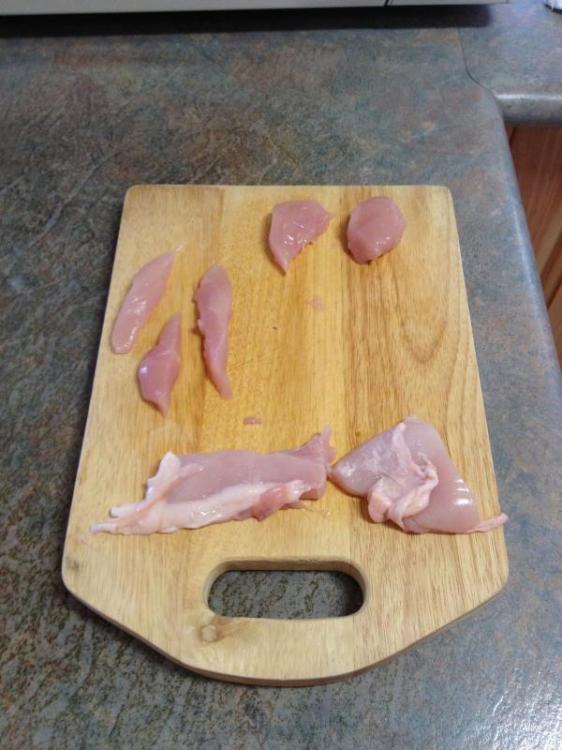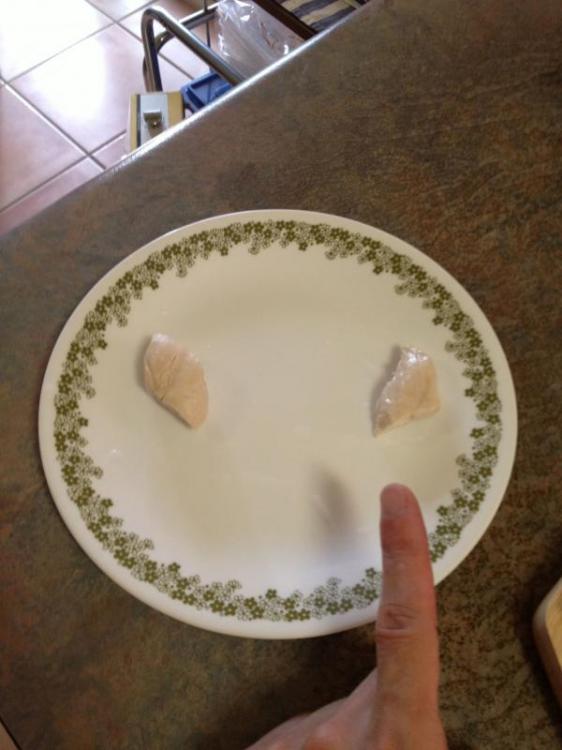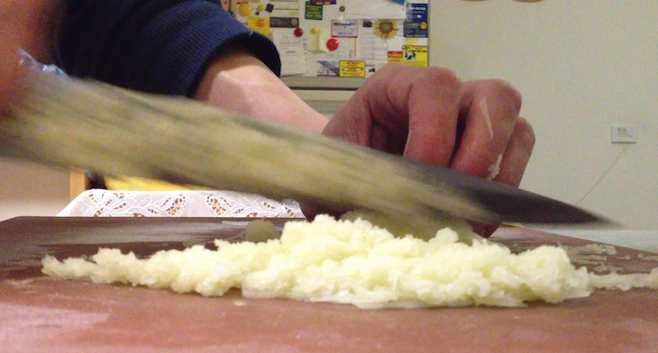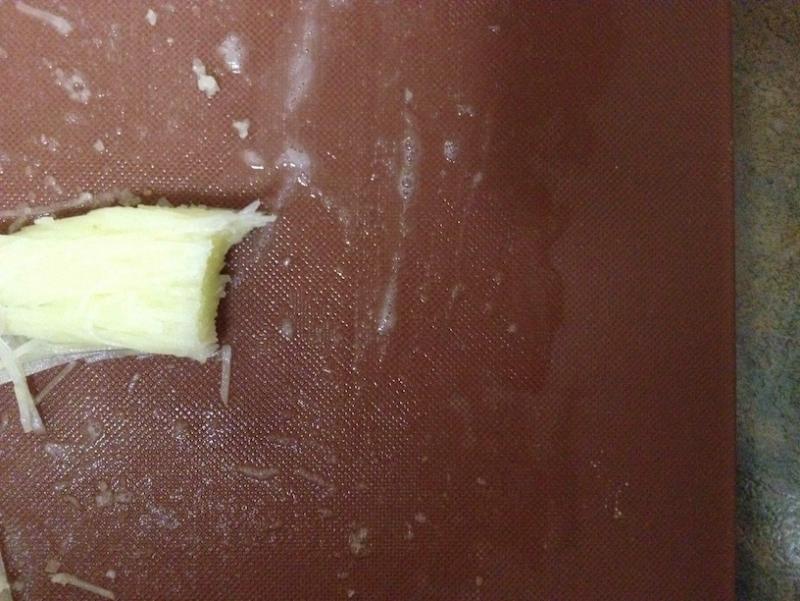-
Posts
56 -
Joined
-
Last visited
-
I heard somewhere or i got confused? I heard that carrot and daikon should not be cooked together because it is bad for heathuf eaten? Eg stewing carrot and raddish, picking raddish and carrot together...
-
Will high heat then avoid this food sticking to pan? In other words, the hotter, the non stick it will be? Or is it that if too hot, also sticky?
-
What makes the food stick to the pot or pan? e.g. Pan frying a piece of fish on a pan, poaching an egg in a pot What's happening there?
-
2 more experiments: Poach eggs in salted water: Yep. I have also tried poaching egg with highly salted water. After cooked, rinsed with running water. Taste check: it has salty taste (not as strong as the salted water though, but can taste saltiness) Hard Boil eggs in salted water: Nope. Another experiment I did was hard boil eggs in salted water. Basically, the result was no salt taste.
-
Did another experiment on cooking some chicken in just water VS cook some in flavoured liquid. The flavoured liquid was made by boiling and simmering water from dried bay leaves, dried star anise, dried sichuan pepper, dried cloves. The results: The chicken cooked in just water. Obviously, bland, only chicken taste. The chicken cooked in flavoured liquid. Basically, only outside, food surface has taste. (both were rinsed with water to get rid of any flavoured liquid that may stick on the surface of the food.) the bottom is the one cooked with flavoured liquid, the colour of the liquid is stuck on the surface, cannot be washed off. I just think salt and flavours is different. (this experiment is not something I wanted to back up any theories, just something I did to see if flavours can go inside the food if the food is cooked in a flavoured liquid medium)
-
Did you rinse with water after they are cooked? or just drained?
-
Thanks. I assumed the potatoes are cut pieces when they are cooked in the salted water? How much salt did you need to add afterwards (approximately... maybe 50% more to complete it to be a well-seasoned?)
-
I understand. But I was thinking whether the salty taste came from the water that is left on the food surface after cooked or it actually went inside the food. And from the experiment I did, it seems it's more frim the salted water that still coating the food.
-
Reason and Curiousity: My theory and quite common sense that when food is being cooked, water comes out from the food. For example, when we pan fry vegetables, very obvious that water came out. Lots and lots of them too. Accordingly, I was thinking if the food is being cooked, nothing goes in because water is being pushed out. But some basic cooking recipes, like boiling vegetables, they are cooked in salted water. So, I would like to check if saltiness really does go in or no. Goal: Wanted to see if salted water will put saltiness into the food. So: Cut some chicken pieces from chicken breasts. Cooked some in just water. Some in highly salted water (very very salty taste) Process and Results: 1st experiment: Cut some slices. Cooked in salted water. After cooked, rinsed the chicken with running water to make sure no salted water at surface of food. Checked taste. Not much salty taste can be noticed. 2nd experiment: Then cooked one in just water. Cooked another one with similar size in very salty water. Rinsed the chicken with running water. Compared the two. Could tell the difference but only slight. The one cooked in highly salted water has saltiness in the chicken. Comparing to the bland chicken piece that was cooked in just water, not much difference though. (However, this may still mean that saltiness didn't really go in but some of the salted water went between the meat muscles, then when rinsed through water after cooked, the running water didn't rinse through the muscle spaces, because cooking time in salted water was longer than rinsing time). Nevertheless, not sure the science behind this, but practically speaking, even after rinsed, could taste salt but slightly. 3rd experiment: Cooked one bigger chicken piece in highly salted water. Just drained by flicking it. No rinsing with water. Surely could tell it has salty taste. Not as much as the salted water. This make sense since I flicked drained it, meaning not the whole food surface is covered with the salted water. Only some is attached on the surface, so in theory, and logically, it had slightly lower slaty taste. Theory. After Thoughts: 1. This is different to cooking pasta, dried mushrooms, rice since these are dried, and they rehydrate during the cooking process. 2. If the food needed to be rinsed with water after cooked, then if the desired goal is to have the food tasted as a well salted food, then this means the water needed to be very very highly salty. (meaning waste of salt, and will be costly, alternatively, just less water to increase salt concentration) 3. Flavour may be different. So have to experiment with cooking liquid with just flavours, no salt. Just 2 photos of the experiment I took: More Thoughts, experience, theories, opinions welcome.
-
I have taken close up videos of my cutting and tried to find problems and answers. At this moment, I believe the problems and solutions (which worked much better) are: Initial thrust / speed / force: Too slow or too "weak" that my initial thrust didn't start cutting the food but push the food out, then start cutting. I tried increased speed a little, and somehow aimed "consciously" to insert more force to cut immediately, it helps the most. Second thing is (although I don't think it mattered much) was that if I land the knife above the food on the chopping board first before touching the food (compared to knife in mid air, start cutting the food, and land at chopping board later), this helps a little since it is a curved edge knife, by doing this, the knife was actually doing a more pushing food down than pushing food forward. I think the speed and initial thrust definitely helped a lot
-
Hello. 1. Is the Maximum temperature for steaming is 100 degree celsius? 2. When steaming below 100 degree celsius, what makes it less than 100 degree since for the water to turn into steam, it needs 100 degree. 3. Steam cooking. Is it like pan frying where the heat transfer is mainly from below going up only. (whereas in ovens, it's from all sides) *** My Thinking: Is it the density of water vapours in the air that the food is being surrounded? That is, more vapour "bubbles" in the air, higher the chance and more number of vapour can be condensed on the food surfaces, hence transferring heat to the food. Less "bubbles", less water vapours can be condensed on the food, hence less heat, and hence, lower cooking temperature? *** Accordingly, to get lower than 100 degree, three methods I can think of and how the science behind it: The liquid producing the steam is not boiling, so giving less vapours up to the air even though those bubbles are still 100 degree? With lid open, the steam coming up, some escaped to other places, or got blown away, hence not much vapours can be landed on the food, hence less hot? With electronic steamer, I guess it produce less vapours than if steaming at 99 degrees celsius? Thanks
-
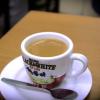
Thermometer Usage. How Should I use it to measure properly?
skyhskyh replied to a topic in Kitchen Consumer
I guess there shoulnt be any problems if i use the oven thermoeter inside a steamer? I wonder if i throw inside hot deep frying oil, would it be ok too since the temperature range should be high for oven thermometer? -

Thermometer Usage. How Should I use it to measure properly?
skyhskyh replied to a topic in Kitchen Consumer
If I want to measure temperature of my oven or steamer, then what sort of thermometre should I and can I get? -
Hello, Firstly, I am thinking to buy a good thermometre, this one seems quite handy and quite good. Recommened by Modernist Cuisine Site Any people here have used it and has any feedback to give? good or bad or some tips... Secondly, the other things I would like to ask is about how to use thermometre in general. There are some situations I can think of that I wanted to test out, e.g. how hot is the oven I am cooking my food in, how hot is the steamer cooking the food... The problems I am concerned is, is it suitable to place the whole thermometre inside the oven, close the lid, after a while, open it and check the oven temperature? Same goes with steamer, is it suitable to throw in the whole thermometre in, steam it, and check temperature later? Will the plastic or whatever material the thermometre is made of melt? Will it break the thermometre? Thirdly, if it is not suitable to throw in the thermometre, then what steps I can go about in order to measure accurately about those temperatures? Thanks in advance
-
For example, chopping a bunch of chives (it's not chives in the photo) Then those food near the top of the chopping board end is longer.... like this: DO you also have this when you chopping bunch of food? HOw do you avoid this? Note: My knife is sharp already



